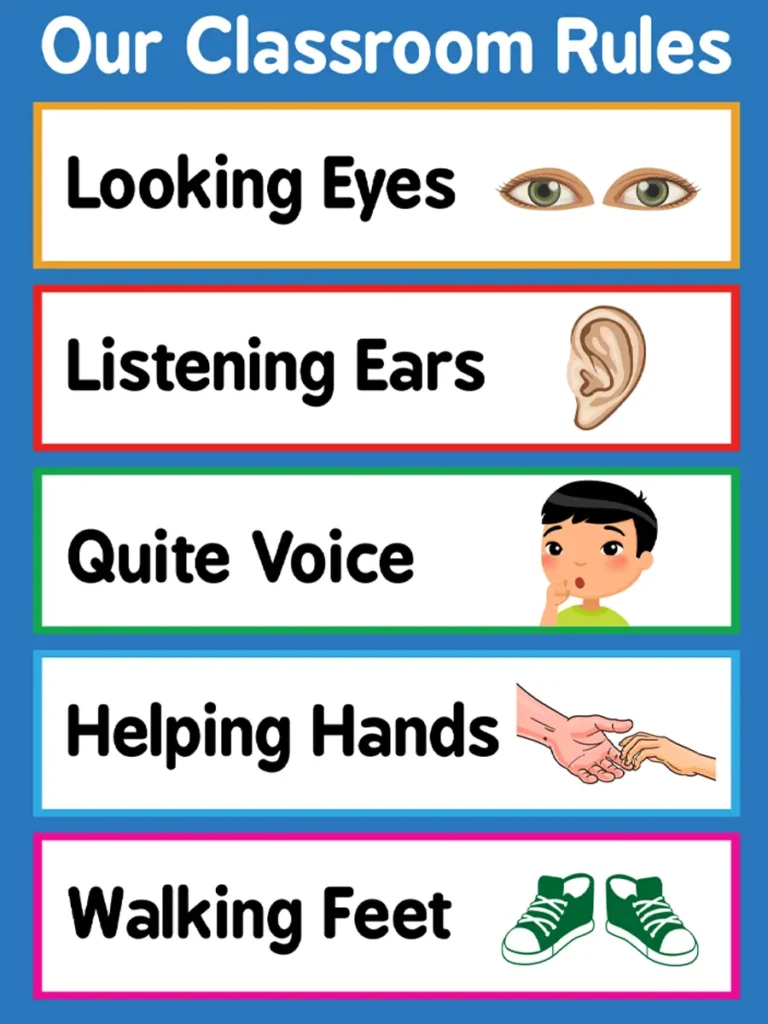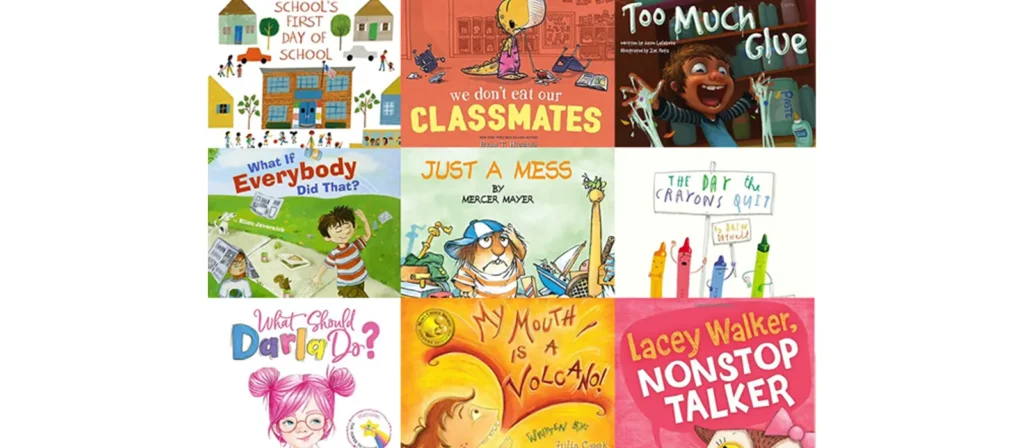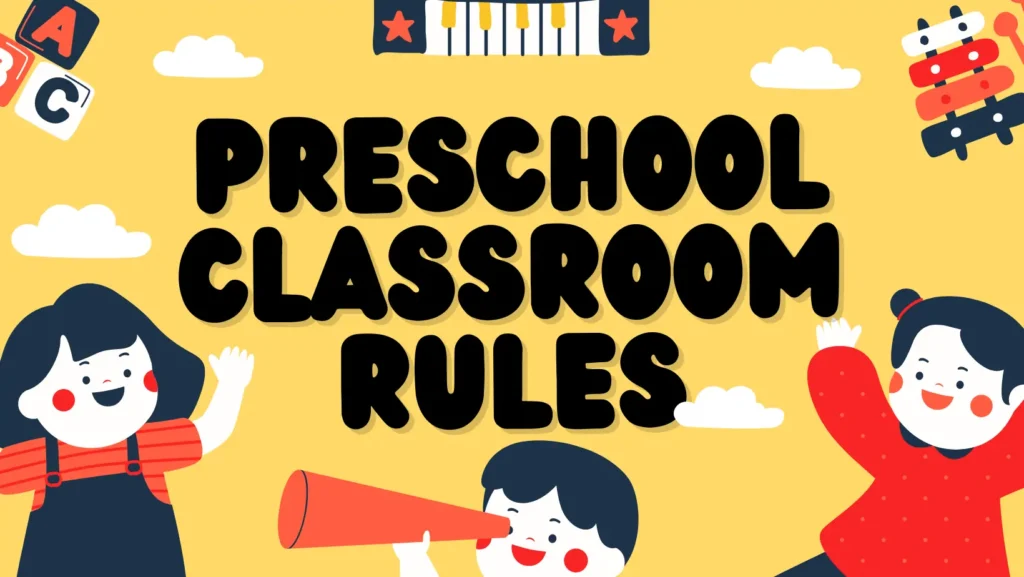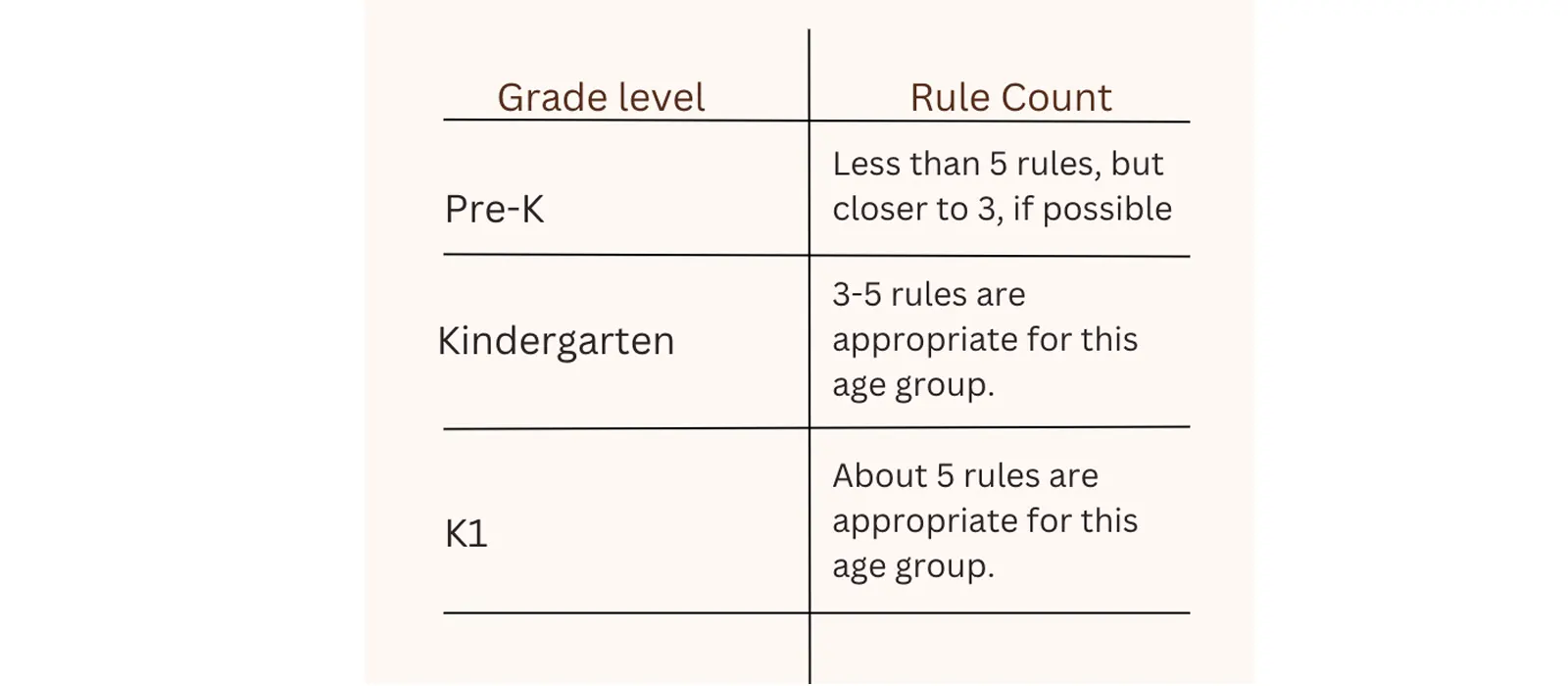Are you a preschool teacher looking to establish effective preschool classroom rules? Building a positive and structured environment is crucial for the development and well-being of preschool children. By creating and implementing clear and age-appropriate classroom rules, you can foster a supportive space that encourages learning, growth, and cooperation.
Creating and implementing preschool classroom rules is a crucial step in fostering a nurturing and structured environment where children can learn and grow. It’s about guiding young minds to understand the importance of respect, safety, and cooperation through simple, positive statements.
In this article, we will guide you through the process of creating and implementing rules that will not only maintain discipline but also promote positive behavior and social skills. From establishing a collaborative rule-making process to ensuring consistency and reinforcement, we will provide you with practical tips and strategies that will enhance the overall classroom experience.
What are preschool classroom rules?

Preschool classroom rules are guidelines that help preschoolers understand the expectations and boundaries of their learning environment. These rules are designed to promote positive behavior, safety, and cooperation.
The Benefits of Setting Preschool Classroom Rules
Establishing classroom rules in a preschool setting has many benefits. Not only does it help manage classroom behavior, but it also enhances your child’s learning experience.
- Promotes a safe learning environment: the main benefit of classroom rules is that they create a safe and secure environment. When children feel safe, they are more likely to engage in learning activities and explore their surroundings.
- Fosters independence and responsibility: Classroom rules encourage children to take responsibility for their own behavior. By understanding and following rules, preschoolers learn about consequences and the importance of making positive choices.
- Developing Self-Discipline: Consistently enforcing rules builds self-discipline in preschoolers. When children see that rules apply to everyone and are consistently enforced, they learn to regulate their own behavior and make responsible choices.
- Prevent Conflict and Disruption: Clear rules help prevent conflict and disruption in the classroom. When expectations are communicated and understood, children are less likely to engage in disruptive behavior or conflict with peers.

By establishing clear and consistent rules, you can create an environment that promotes positive behavior, encourages self-discipline, and minimizes disruptions, ultimately enhancing the overall learning experience in the preschool classroom.
What are some preschool classroom rules?
When creating classroom rules for preschoolers, it is important to keep their developmental stage and abilities in mind. Here are some basic preschool classroom rules that promote a positive and structured learning environment:
- Kindness and Respect: Teach children the importance of treating others with kindness and respect. Encourage them to use kind words, share toys, and take turns.
- listen and follow directions: teach children the importance of actively listening and following directions. This rule helps create a focused and organized classroom environment.
- Care for Classroom Materials: Teach children to respect and care for classroom materials such as books, toys, and art supplies. This rule instills a sense of responsibility and helps keep the classroom neat and organized.
- Use gentle hands: Teach your child to use gentle hands and to avoid hitting, pushing, or hurting others. This rule promotes positive social interactions and conflict resolution.
- Raise your hand: Teach children to raise their hand when they have something to say or when they need assistance. This rule encourages respectful communication and helps manage classroom disruptions.
Communicating and explaining these rules to preschoolers is critical to their understanding and compliance.
What to consider when setting preschool classroom rules?
When creating classroom rules for preschoolers, it is important to consider their developmental stage, individual needs, and the specific dynamics of the classroom. Here are some factors to consider:
- Age-appropriate rules: preschoolers have unique needs and abilities. Make sure you establish rules that are appropriate for their age and stage of development. For example, while it may be reasonable to expect older children to sit quietly for longer periods of time, preschoolers may need more movement breaks.
- Individual differences: Consider the individual needs and differences of your students when setting rules. Some children may require additional support or accommodations. Be flexible and adaptable to meet their specific needs.
- Cultural sensitivity: Be mindful of the cultural backgrounds and values of your students when setting rules. Ensure that the rules respect and reflect the diversity of your classroom.
- Collaboration with colleagues and parents: Seek input and collaboration from your colleagues and parents. They can provide valuable insights and perspectives that can help shape your classroom rules.
- Adjust rules as needed: As the school year progresses, you may find that some rules need to be adjusted or new ones added. Regularly reviewing the rules with your child will allow you to make necessary changes and keep the rules relevant to the dynamics of your classroom.
By taking these factors into consideration, you can create rules that are inclusive, supportive, and tailored to the unique needs of your preschoolers.
How to Create Preschool Classroom Rules?
Creating effective preschool classroom rules requires careful consideration and collaboration. Here’s a step-by-step guide to help you create rules that are age-appropriate, clear, and meaningful:
1.Create a list

Starting with a comprehensive list is crucial. This list should be developed with the input of the children, incorporating their ideas and suggestions. By involving them in this initial stage, we instill a sense of ownership and responsibility towards the classroom rules. The process of creating this list should be interactive and consider the developmental stages of the preschoolers, ensuring that the rules are relevant and understandable to them.
2.Keep it simple and specific
Use simple, concise language that preschoolers can understand. Avoid negative language and focus on positive behaviors. For example, instead of saying, “Don’t run,” say, “Let’s take a walk indoors.
3.Involve children

Encourage children to participate in the rule-making process. Not only does this give them a sense of ownership, it also helps them understand the purpose of the rules. Ask them questions like, “What do you think the rules should be?” Or, “What behaviors do you think are important for our classroom?”
4.Limit the number of rules
Preschoolers have a limited attention span, so it is important to keep the number of rules manageable. Aim for about 3-5 rules that cover the basic behaviors you want to promote in your classroom.
5.Make sure the rules are positive
Positivity breeds a positive preschool learning environment. When rules are framed positively, they encourage children to behave well to achieve a positive outcome rather than out of fear of punishment.
- Focus on Desired Behaviors: Highlight what children should do, not what they shouldn’t. This approach promotes a more positive and constructive classroom culture.
- Celebrate Compliance: Acknowledge and celebrate when children follow the rules. This recognition can be as simple as verbal praise or a sticker chart that tracks collective classroom achievements.

6.Use visual effects
Young children are visual learners. By incorporating visual aids into your rule set, you can make it easier for them to understand and follow the rules. Use pictures and symbols that represent each rule. Highlight these visuals in your classroom so that all children can see them. Involve children in creating these visuals, including drawing pictures associated with each rule or helping to post visuals around the classroom. These activities reinforce their understanding of and commitment to the rules.
7.Make it fun and memorable
Creating rules need not be a solemn affair. Instead, it can be an exciting activity that involves creativity, storytelling, and play. This not only makes the rules more relatable for preschoolers but also ensures they’re more likely to remember and follow them.
8.Print and post the rules on the classroom wall

Print the rules on brightly colored posters with large, readable text and accompanying illustrations or icons that depict the rule in action. This visual representation not only helps pre-readers understand the rules but also adds a colorful and educational decoration to the classroom walls.
Use pictures or symbols to support the comprehension of children who are not yet readers.
How to enforce preschool classroom rules?
To effectively enforce preschool classroom rules, educators should integrate them into daily stories, clearly explain each rule’s purpose, and consistently use positive reinforcement. This approach ensures rules are understood, remembered, and followed, creating a harmonious learning environment conducive to the development and well-being of every child.
Integrate into the story
Children are naturally drawn to stories, making them an excellent vehicle for introducing and reinforcing classroom rules. By weaving the rules into engaging narratives, educators can capture children’s attention and impart important lessons in a memorable way.

- Create Engaging Narratives: Develop stories that feature characters dealing with situations where they must follow the preschool classroom rules. This method helps children understand the importance and application of each rule in a relatable context.
- Storytelling Sessions: Regular storytelling sessions can reinforce the rules through repetition. These sessions can become a part of the daily or weekly routine, ensuring that the rules remain fresh in the children’s minds.
- Involve Children in Story Creation: Encourage children to contribute to the stories by suggesting scenarios or outcomes based on the classroom rules. This participatory approach not only makes the experience more engaging for them but also deepens their understanding and commitment to the rules.
Explain Each Rule
For rules to be effective, children need to understand them fully. A clear explanation of each rule, including its purpose and the behavior it seeks to encourage, can help children grasp its importance.

- Simplify Language: Use simple, clear language that preschoolers can easily understand. Avoid complex explanations; instead, focus on conveying the essence of the rule in a way that resonates with their level of comprehension.
- Use Examples and Role-Playing: Illustrate each rule with real-life examples or through role-playing activities. This method helps children see how the rule applies in different situations, enhancing their ability to internalize and follow it.
- Feedback and Discussion: Allow time for children to ask questions or express concerns about the rules. This open dialogue can clarify misunderstandings and provide educators with insights into the children’s perspectives.
Use Positive Reinforcement
Positive reinforcement is key to encouraging desired behaviors. Recognizing and rewarding adherence to the rules motivates children to continue following them.
- Immediate Acknowledgment: Provide immediate positive feedback when children follow a rule. This could be verbal praise, a high five, or a sticker, which reinforces their good behavior on the spot.
- Consistent Rewards System: Establish a rewards system that consistently acknowledges rule-following behavior. This system can include earning points towards a class reward, individual tokens, or certificates of recognition.
- Highlight Positive Examples: Use real-life instances of rule-following behavior as positive examples for the class. This not only rewards the child who followed the rule but also serves as a powerful motivator for their peers.
Dealing with Rule-Breaking and Discipline in Preschool
Rule-breaking is a natural part of childhood, and it is essential to handle it in a constructive and educational manner. When a preschooler breaks a classroom rule, it is an opportunity for teaching and learning rather than punishment. Here are some strategies to effectively deal with rule-breaking and discipline in the preschool classroom:
- Address the behavior immediately: When a child breaks a rule, address the behavior promptly. Use a calm and firm tone to communicate that the behavior is not acceptable. Be specific about what they did wrong and why it is against the classroom rules.
- Redirect and offer alternatives: Instead of simply telling a child what not to do, redirect their behavior and offer alternative choices. For example, if a child is running indoors, redirect them to a designated area for physical activities, such as a play corner or outdoor play area.
- Encourage reflection and problem-solving: After addressing the behavior, engage the child in reflection and problem-solving. Ask open-ended questions to encourage them to think about their actions and the consequences. For example, “What could you have done differently?” or “How do you think your actions made others feel?”
By using these strategies, you can turn rule-breaking moments into valuable learning opportunities for preschoolers, helping them understand the impact of their actions and develop self-control.
Conclusion
Creating and implementing effective preschool classroom rules is a multifaceted process that extends beyond mere rule enforcement. It involves creating a supportive environment where children feel safe to learn and grow. By strategically placing rules, consistently applying them, and addressing emotions and behaviors with empathy, preschool teachers can foster a classroom atmosphere conducive to learning and development.
By creating and implementing effective preschool classroom rules, you are laying the foundation for a successful learning journey for your students. Embrace this opportunity to create a cohesive and engaging classroom environment that nurtures their social, emotional, and academic development.












